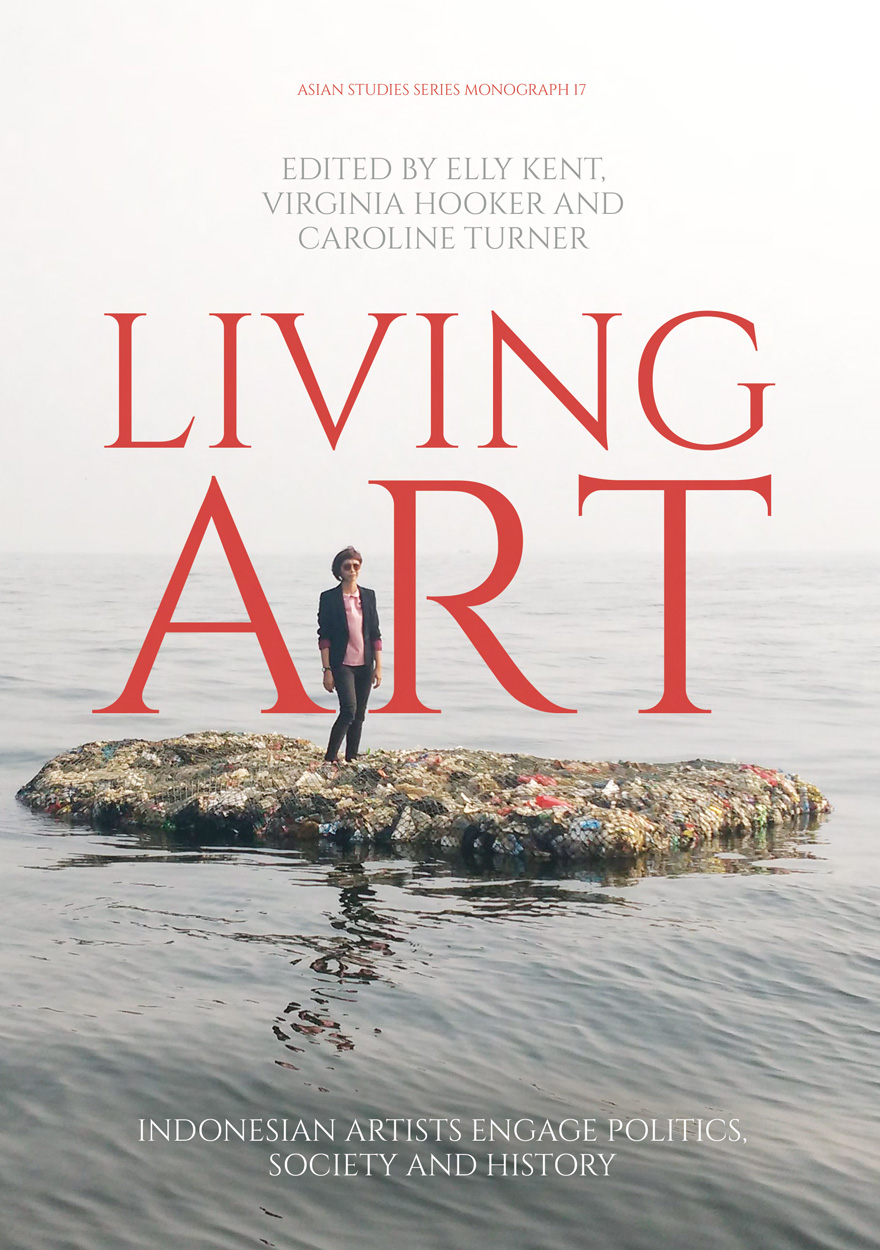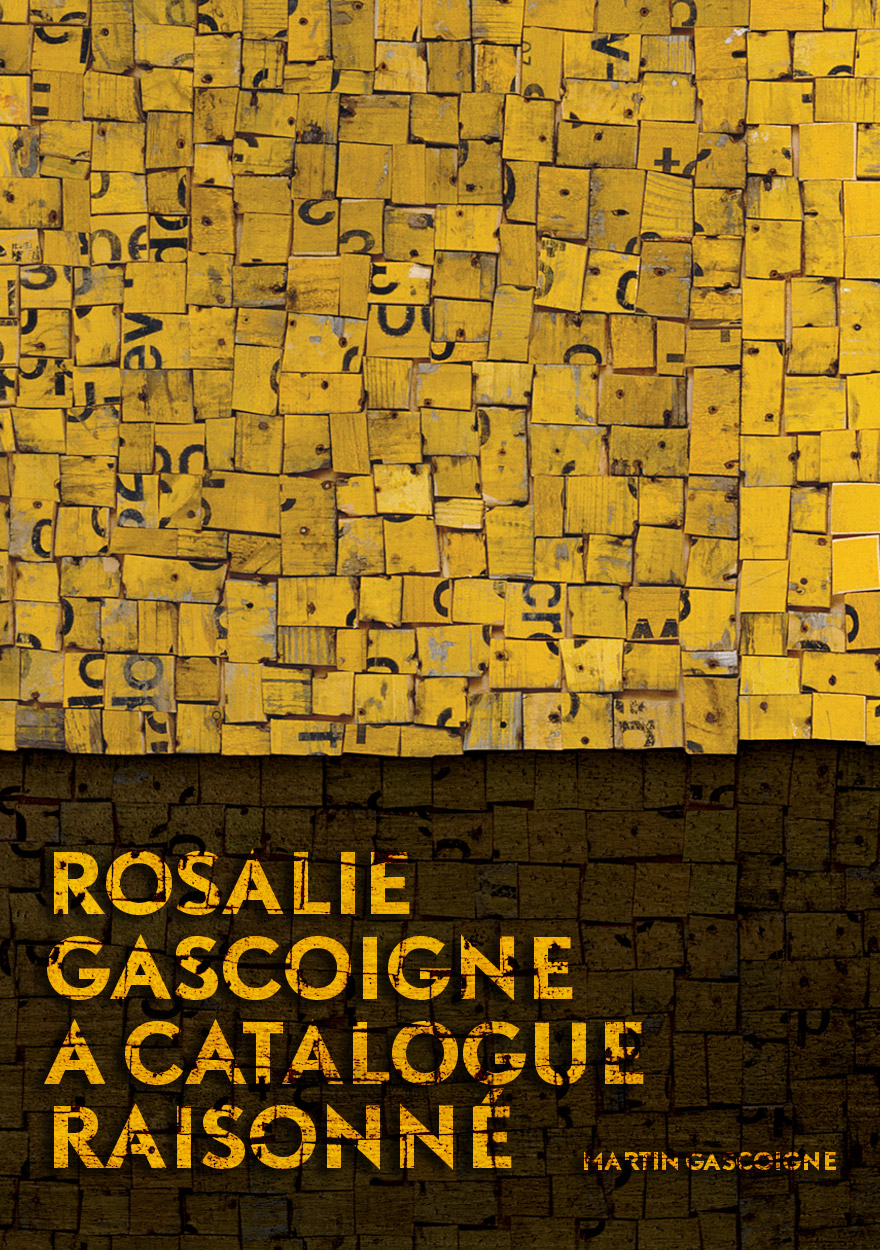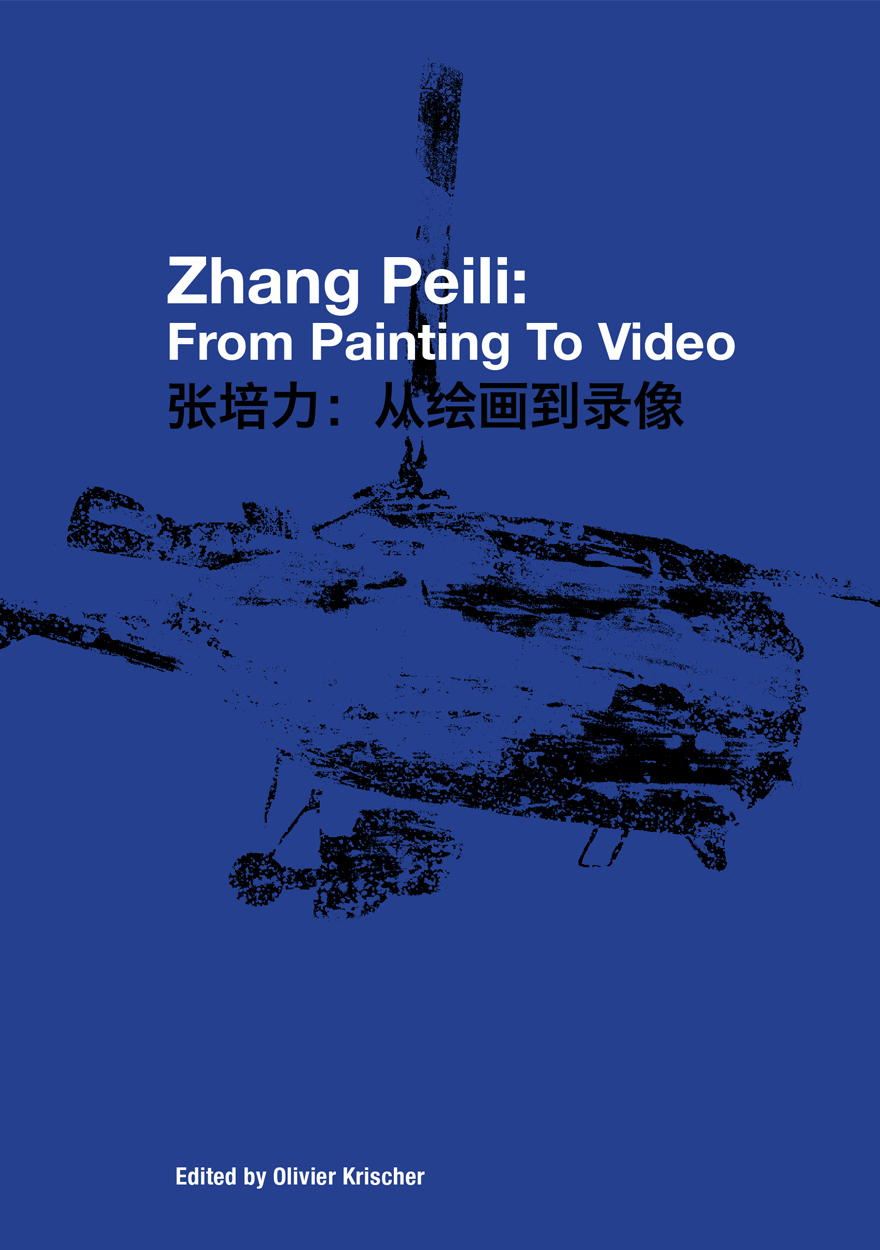Search titles
Displaying results 1 to 10 of 50.

‘My own sort of heaven’ »
A life of Rosalie Gascoigne
Authored by: Nicola Francis
Publication date: October 2024
Widely regarded as a major Australian artist, Rosalie Gascoigne first exhibited in 1974 at the age of fifty-seven. She rapidly achieved critical acclaim for her assemblages which were her response to the Monaro landscape surrounding Canberra. The great blonde paddocks, vast skies and big raucous birds contrasted with the familiar lush green harbour city of Auckland she had left behind. Her medium: weathered discards from the landscape. By her death in 1999, her work had been purchased for major public art collections in Australia, Aotearoa New Zealand and New York, and had been exhibited across Europe and Asia.
Gascoigne’s story is often cast in simple terms—an inspirational tale of an older woman ‘finding herself’ later in life and gaining artistic acclaim. But the reality is much more complex and contingent. This biography explores Gascoigne’s achievement of her ‘own sort of heaven’ through the frame of the narrative she told once she had gained fame, using a series of interviews she gave from 1980 to 1998. It revolves around her frequently stated sense of feeling an outsider, her belief that artists are born not made, and other factors central to the development and impact of her work. Migrating to Australia from New Zealand in 1943, Gascoigne experienced the dramatic social changes of the 1960s and 1970s and benefited from the growth of cultural life in Canberra, a developing Australian art industry, and changing conceptions of aesthetic beauty.

Dick Watkins »
Reshaping Art and Life
Authored by: Mary Eagle
Publication date: September 2024
Dick Watkins belongs to the generation of artists whose careers were launched at the high-flying end of American-based Abstraction. Almost immediately he faced up to the abrupt end of the Modern era. Culture was no longer to be framed by ‘progress’. In 1970, taking stock of the situation, he announced that he was a copyist, there being no such thing as a new creation in art, shaped as it was by visual languages. Nor did he intend to limit his curiosity about the relation of art to life by restricting himself to a ‘personal’ style. There followed a long and passionately adventurous exploration into many subjects and styles, during which Watkins was often the first to signal changes taking place in Western culture. The result is that for half a century he has been a major, if controversial figure in Australian art.
Format: Hardback

The Compleat Busoni, Volume 3 »
Ending to Dr. Faust and the definitive realisations of the Fantasia Contrappuntistica
Authored by: Larry Sitsky
Publication date: November 2023
VOLUME 3: I. Ending to Dr. Faust II. Definitive version of the Fantasia Contrappuntistica for two pianos III. Concerto for Orchestra: Completion and orchestration of the Fantasia Contrappuntistica.
Larry Sitsky, professor emeritus at The Australian National University, is an internationally known composer, pianist, scholar, and teacher. His books are fundamental reference works on subjects such as Australian piano music, the 20th-century avant-garde, the piano music of Anton Rubinstein, the early 20th-century Russian avant-garde, and the classical reproducing piano roll.
The Compleat Busoni is the result of Sitsky’s lifelong focus on the composer Ferruccio Busoni. Over three volumes, Sitsky surveys Busoni’s vast output, provides an ending to the unfinished opera Dr. Faust, and presents definitive realisations of the Fantasia Contrappuntistica in two-piano and orchestral versions. New insights into Busoni’s style and aesthetics are an integral aspect of this work.
Format: Hardback

The Compleat Busoni, Volume 2 »
Busoni’s other music: A complete survey
Authored by: Larry Sitsky
Publication date: November 2023
VOLUME 2: Busoni’s other music: A complete survey.
Larry Sitsky, professor emeritus at The Australian National University, is an internationally known composer, pianist, scholar, and teacher. His books are fundamental reference works on subjects such as Australian piano music, the 20th-century avant-garde, the piano music of Anton Rubinstein, the early 20th-century Russian avant-garde, and the classical reproducing piano roll.
The Compleat Busoni is the result of Sitsky’s lifelong focus on the composer Ferruccio Busoni. Over three volumes, Sitsky surveys Busoni’s vast output, provides an ending to the unfinished opera Dr. Faust, and presents definitive realisations of the Fantasia Contrappuntistica in two-piano and orchestral versions. New insights into Busoni’s style and aesthetics are an integral aspect of this work.
Format: Hardback

The Compleat Busoni, Volume 1 »
Busoni and the piano: The works, the writings, and the recordings
Authored by: Larry Sitsky
Publication date: August 2023
VOLUME 1: Busoni and the piano: The works, the writings, and the recordings.
Larry Sitsky, professor emeritus at The Australian National University, is an internationally known composer, pianist, scholar, and teacher. His books are fundamental reference works on subjects such as Australian piano music, the 20th-century avant-garde, the piano music of Anton Rubinstein, the early 20th-century Russian avant-garde, and the classical reproducing piano roll.
The Compleat Busoni is the result of Sitsky’s lifelong focus on the composer Ferruccio Busoni. Over three volumes, Sitsky surveys Busoni’s vast output, provides an ending to the unfinished opera Dr. Faust, and presents definitive realisations of the Fantasia Contrappuntistica in two-piano and orchestral versions. New insights into Busoni’s style and aesthetics are an integral aspect of this work.
Format: Hardback

Living Art »
Indonesian Artists Engage Politics, Society and History
Publication date: November 2022
Living Art: Indonesian Artists Engage Politics, Society and History is inspired by the conviction of so many of Indonesia’s Independence-era artists that there is continuing interaction between art and everyday life. In the 1970s, Sanento Yuliman, Indonesia’s foremost art historian of the late twentieth century, further developed that concept, stating: ‘New Indonesian Art cannot wholly be understood without locating it in the context of the larger framework of Indonesian society and culture’ and the ‘whole force of history’. The essays in this book accept Yuliman’s challenge to analyse the intellectual, sociopolitical and historical landscape that Indonesia’s artists inhabited from the 1930s into the first decades of the new millennium, including their responses to the COVID-19 pandemic.
The inclusion of one of Yuliman’s most influential essays, translated into English for the first time, offers those outside Indonesia an insight into a formative period in the generation of new art knowledge in Indonesia. The volume also features essays by T. K. Sabapathy, Jim Supangkat, Alia Swastika, Wulan Dirgantoro and FX Harsono, as well as the three editors (Elly Kent, Virginia Hooker and Caroline Turner). The book’s contributors present recent research on issues rarely addressed in English-language texts on Indonesian art, including the inspirations and achievements of women artists despite social and political barriers; Islam- inspired art; artistic ideologies; the intergenerational effects of trauma; and the impacts of geopolitical change and global art worlds that emerged in the 1990s. The Epilogue introduces speculations from contemporary practitioners on what the future might hold for artists in Indonesia.
Extensively illustrated, Living Art contributes to the acknowledgement and analysis of the diversity of Indonesia’s contemporary art and offers new insights into Indonesian art history, as well as the contemporary art histories of Southeast Asia and Asia more generally.

Creative Frictions »
Arts Leadership, Policy and Practice in Multicultural Australia
Authored by: Cecelia Cmielewski
Publication date: August 2021
Creative Frictions explores the relationship between visionary aspects of practice and policy. Despite over 30 years of arts and cultural policy attention, there remains a widespread view among the general public and artists alike that creative production does not reflect Australia’s culturally diverse population. Australia’s increasingly complex society can no longer be confined to ‘essentialised’ or traditional definitions of ethnic communities. While this diversity and its emerging complexity can be ‘celebrated’ as a source of creativity and innovation, it can also give rise to social, political and creative challenges. A key challenge that remains for the arts sector is its ability to support the creative expression of cultural difference. One measure of inclusive creative production is to look at the participation of artists of non–English speaking backgrounds (NESBs)—a problematic term discussed in the book. There are half as many NESB artists compared to those of other professions participating in the workforce, and while under-representation is an issue for management in the arts sector, the question of representation also benefits from being understood more broadly beyond the narrow sense of multiculturalism as a tool to manage cultural difference. This book explores the crucial role of creative leaders and how they work with the ‘mainstream’ while maintaining their creative integrity and independence to generate a ‘virtuous’ circle of change. Creative Frictions argues that it is the NESB artists who lead change in the arts sector and that creative and organisational leadership working in partnership make creative use of ‘friction’ and develop the necessary ‘trust’ to generate the ‘traction’ for a supportive multicultural arts milieu.

How Local Art Made Australia’s National Capital »
Authored by: Anni Doyle Wawrzyńczak
Publication date: August 2020
Canberra’s dual status as national capital and local city dramatically affected the rise of a unique contemporary arts scene. This complex story, informed by rich archival material and interviews, details the triumph of local arts practice and community over the insistent cultural nation-building of Australia’s capital. It exposes local arts as a vital force in Canberra’s development and uncovers the influence of women in the growth of its visual arts culture. A broad illumination of the city-wide development of arts and culture from the 1920s to 2001 is combined with the story of Bitumen River Gallery and its successor Canberra Contemporary Art Space from 1978 to 2001. This history traces the growth of the arts from a community-led endeavour, through a period of responses to social and cultural needs, and ultimately to a humanising local practice that transcended national and international boundaries.

Rosalie Gascoigne »
A Catalogue Raisonné
Authored by: Martin Gascoigne
Publication date: September 2019
Rosalie Gascoigne (1917–1999) was a highly regarded Australian artist whose assemblages of found materials embraced landscape, still life, minimalism, arte povera and installations. She was 57 when she had her first exhibition. Behind this late coming-out lay a long and unusual preparation in looking at nature for its aesthetic qualities, collecting found objects, making flower arrangements and practising ikebana. Her art found an appreciative audience from the start. She was a people person, and it pleased her that through her exhibiting career of 25 years, her works were acquired by people of all ages, interests and backgrounds, as well as by the major public institutions on both sides of the Tasman Sea.
Watch the live video stream from the launch of Rosalie Gascoigne: A Catalogue Raisonné, held on Tuesday 17 September 2019 at the National Gallery of Australia, Canberra, with Director Nick Mitzevich and author Martin Gascoigne on the NGA's Facebook page.
In the media
Read the ANU Reporter article: Art in road signs.
Read the Canberra Times article: Assembling Rosalie Gascoigne's catalogue.

Zhang Peili »
From Painting to Video
Edited by: Olivier Krischer
Publication date: June 2019
In 2014, New York-based artist Lois Conner gifted one of pioneering Chinese artist Zhang Peili’s last paintings to The Australian National University’s newly opened Australian Centre on China in the World. Never exhibited and thought lost, the reemergence of Flying Machine (1994) prompts an exploration of the relation between painting and video in the oeuvre of Zhang Peili. Given Zhang’s significance as a leading conceptual painter in the 1980s, then as a media art pioneer and educator in the 1990s and 2000s, Zhang Peili: From Painting to Video is also a nuanced study of broader developments in Chinese contemporary art’s history. Featuring contributions by historian Geremie R. Barmé, photographer Lois Conner, art historians John Clark, Katie Grube, and Olivier Krischer, and curator Kim Machan, these essays together challenge the narrative of Zhang as ‘the father of Chinese video art’, highlighting instead the conceptual consistency, rigour, and formal experimentation in his work, which transcends a specific medium. By equal measure, the book embraces longstanding connections as integral to its meaning, connections between artists, curators and researchers, collaborators, colleagues and friends through China and Australia.



